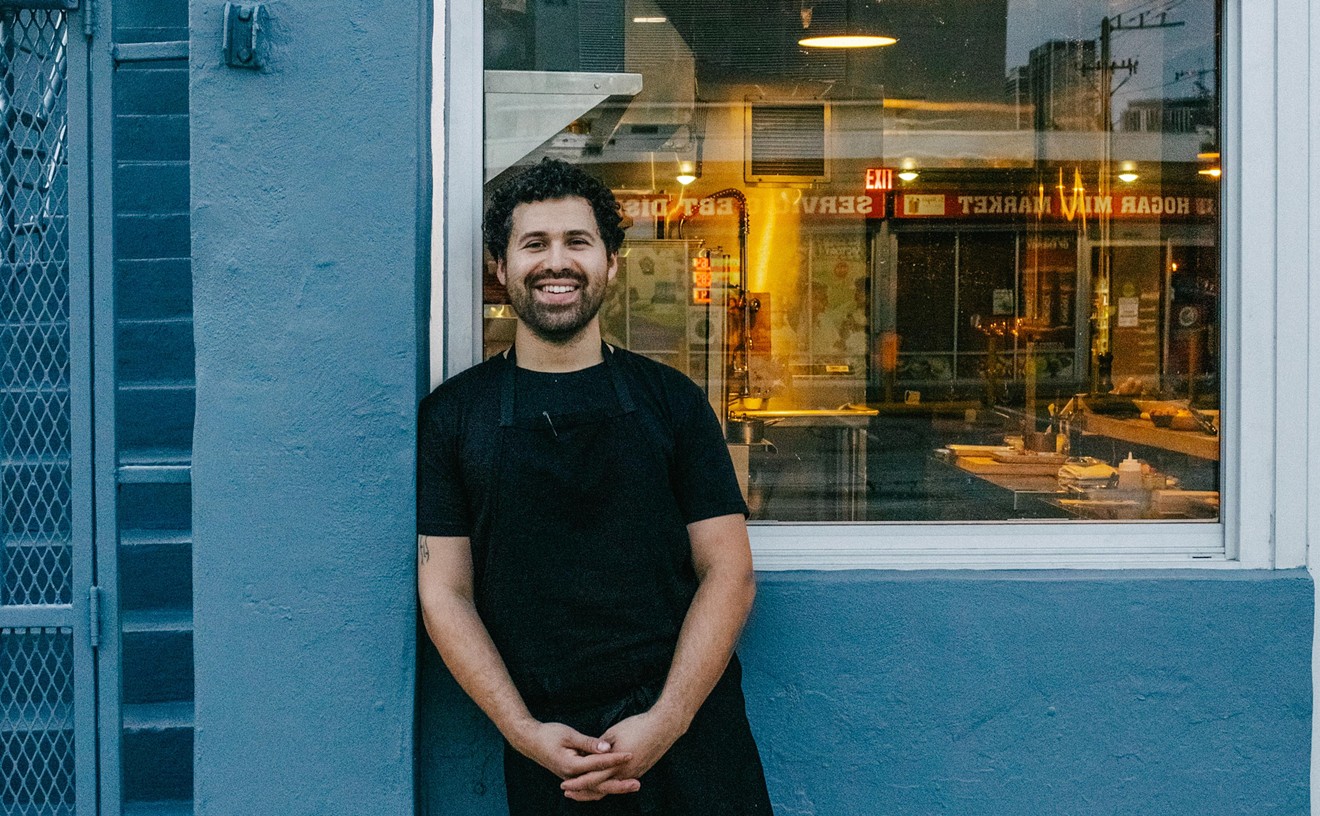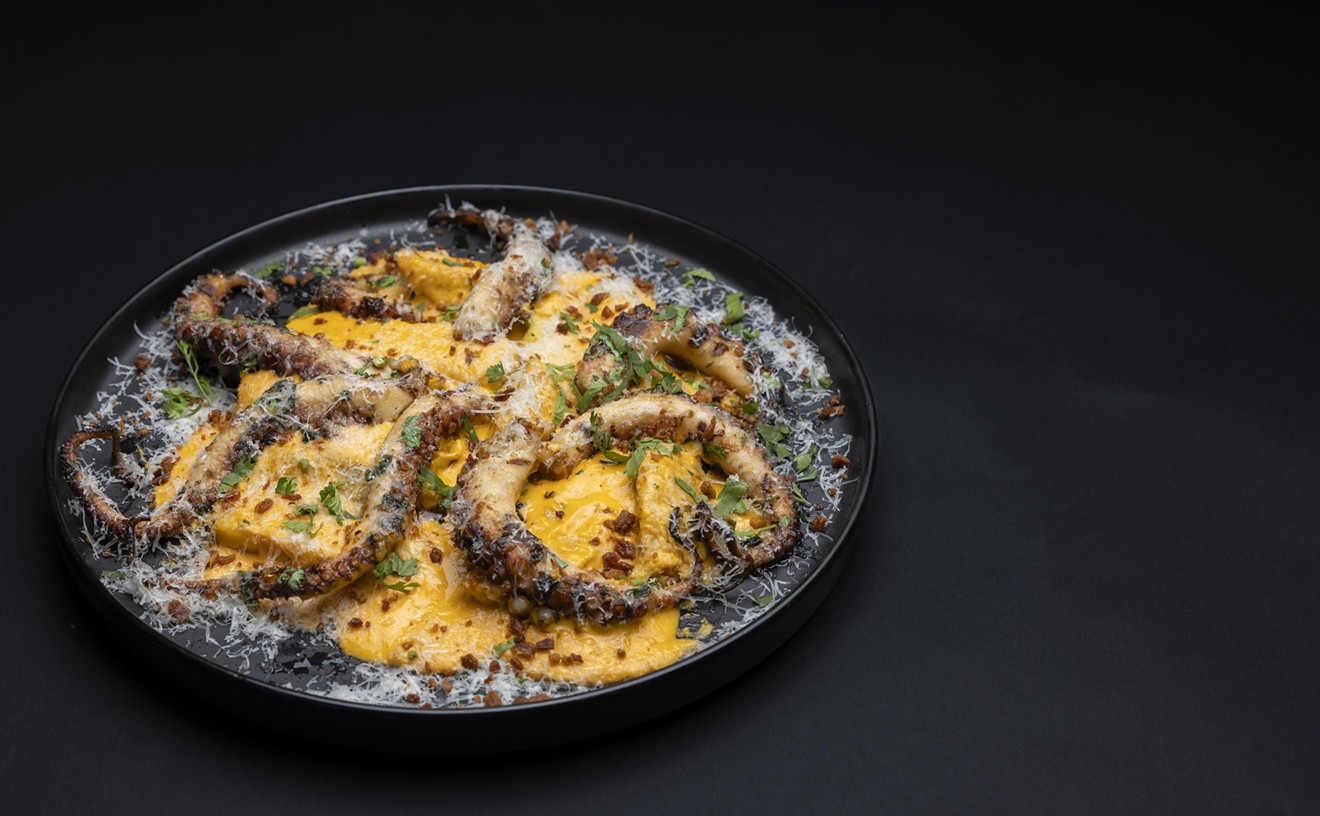The association of beans and poverty is not only legendary but historical. According to Reay Tannahill's Food in History, ancient Greeks and Romans discovered that legumes wouldn't leach nutrients from the soil as grain did, so more annual crops could be produced without having to allow fields to lie fallow every other year. The abundance of chickpeas, lentils, and broad beans caused the upper classes to disdain them -- who wanted common food? -- and the lower classes to thrive on them. The fact that the wealthy also believed beans housed the souls of deceased loved ones only confirms the suspicion of us ordinary folks that too much bean counting addles the brain.
The crusading Greco-Romans spread the word (along with some Scripture): Legumes are the perfect food for the world's poor. Just as every culture has its homeless, every culture also has its native bean. Easy to raise and yielding a plentiful crop, peas and beans have great staying power and travel well. They're nutritious, each little package supplying essential amino acids and dietary fiber. All you need to cook them is water. All you need to eat them is fingers.
The canning of food made beans even more available, though somewhat mushy and less enjoyable, depending on the brand and the length of the processing. The late M.F.K. Fisher, who in her essay "X Is for Xanthippe" "confess[ed] to a great liking for canned baked beans," acknowledged in a later description that such treatment of the legume can also result in a "cold, sluggish, hideous tone of mud gray-brown." And then there are those offending oligosaccharides, the complex sugars that cause what Sally and Martin Stone, authors of The Brilliant Bean and The Instant Bean, politely call "the flatulence factor."
No wonder beans have such a bad rap.
What I like about that bit in The In-Laws isn't the confirmation that poor people can't afford anything but beans. I appreciate the juxtaposition of legumes with ladies, the insinuation that beans, like rotten teeth, deserve respect no matter how old and stigmatized they've grown. I agree with the Stones (the bean ones, not the Rolling ones) that "when you pit the slight embarrassment of a little gas in a social situation against the positive health benefits of beans, there's no contest." I admire the assorted colors and sizes of dried beans, which I use to fill up decorative jars. And I adore the flavor of any and all beans, from my Eastern European culture's split peas and lentils to the Far East's mung and soy beans, from the Caribbean's pigeon peas and black beans to the Americas' pinto and kidney.
Which is certainly fortunate for me, because if I didn't like beans, I would have left the ten-month-old Mexican-Colombian restaurant El Tablazo willing to surrender a tooth in exchange for something to eat.
Located on Collins Avenue in the northern reaches of Miami Beach, El Tablazo looks like the sort of friendly joint where you'd love to become a regular. The 30 seats, most of them booths, are covered in plastic like at Grandma's house. The place mats are maps of Florida that depict the sites of various tourist destinations, and the menus are encased in loose-leaf notebooks, with prices that are almost ridiculously low. The first hint of a problem, though, might be apparent by from reading those menus, which are splashed with generic food graphics downloaded from a computer. Most of the multipage list offers Mexican fare, but the Cano family (owner Luz, brother Jaime, sister-in-law Maria, aunt Lucelly, and husband Omar Sanchez), which created the menu, hails from Colombia. The Canos don't have an intimate acquaintance with Mexican recipes, which they added to attract patrons who may not be familiar with South American cuisine. And it shows. Nearly all the Mexican specialties were indifferently prepared. Heritage doesn't necessarily make someone a good cook, however -- the Colombian items, few that there were, fared only slightly better.
The use of beans, corn, and chilies is common to both cuisines, so I guess it's no surprise that the complimentary homemade tortilla chips and salsa were a highlight. Like a well-trimmed wick, the salsa had a slow, steady burn. Heavy on the onions, a creamy, freshly made guacamole went well with both. Best of all were the sides of refried beans, hearty and thick, the pintos blended but not pasty. One of the Colombian platters we ordered featured a similar dish of beans; though these were whole, they were also delicious.
Both cultures produce good soups, and El Tablazo bore this out with a savory, silky bean soup. Cheese was melted throughout a pinto bean puree spiked with tomatoes, cilantro, and onions. Sopa de pollo, a large serving of soothing chicken soup, gleamed under a thin veil of tasty, authentic fat. Add rice to this stock of shredded chicken and carrots and it's Mexican; add potatoes, which is the way I sampled it, and it's Colombian.
Shredded chicken was flavorful (if not particularly moist or generous) in a burrito topped with red sauce and melted cheese, but unfortunately it didn't survive its hot-oil treatment in a chimichanga. The overly fried tortilla envelope was greasy and unappetizing, and stuffed with so many beans that the chicken was obscured. What little poultry there was turned out to be crunchy strands rather than tender shreds. Sour cream dominated the preparation, overpowering the sauce and cheese that had worked well in the burrito. And a side of Mexican yellow rice (which, along with beans, accompanied all the Mexican entrees) featured hardened grains and shrunken vegetables so petrified they might as well have been excavated from a pyramid.
Quesadillas were positively a disaster, the cheese inside a pitalike tortilla hardly melted. This dish was matched by a dismal beef taco, bland ground meat served cold and greasy in a fried and refried corn shell. Mar y tierra improved our lot, in that it provided an outlet for our frustration: the steak knife and cutting board upon which a large steak had been placed over a bed of shredded lettuce, unripe tomatoes, and pico de gallo. Actually, the meat, a tender flank steak, was juicy from a tangy marinade. But although the four jumbo shrimp that partnered it had a spicy kick, they had been grilled too long and were dry.
Carne asada, a "Colombian special of the day," was desiccated enough to wear as a belt. This steak, a cut similar to the mar y tierra, came with old, lumpy white rice, a salad devoid of dressing, and the soup of the day. That soup was supposed to be sopa de tostones, but the kitchen substituted the aforementioned chicken when it ran out.
A "house special" contained an assortment of Colombian delicacies. Grilled chorizo was particularly good, pungent and piquant, while the fried egg over white rice was perfectly done and the side dish of half an avocado soft and ripe. But the carne asada was burned and tough and the chicharron, though it actually had chunks of pork attached to the rind, was nearly inedible. An arepa -- that traditional cornbread -- fared the worst. Barbara Karoff, author of South American Cooking, writes that "few of the tricks used to make arepas more palatable really do the trick for us. Even at their best -- which is not the way they are eaten by most people -- they are merely pleasant." She might have done her research for that cookbook at El Tablazo.
The restaurant's lineup of Colombian dishes -- fried steak, broiled chicken, rice, salad -- could represent just about any South American nation. I'm not sure why El Tablazo is shying away from its own complex and fascinating heritage. What happened, I wonder, to the stews and casseroles that are the trademarks of Colombian cuisine? Where are the potatoes and fresh fish? I'd much rather be let down by something that at least looks authentic.
Forget about getting a Colombian dessert. We had to go back to Mexico to finish the meal. And while it might seem impossible to screw up fried ice cream, El Tablazo succeeded. Barely able to contain a scoop of softening ice cream, the coating tasted freezer-burnt, as if it had been made earlier in the day and refrozen. Interestingly, the ice cream itself was Neapolitan flavor, that vanilla-chocolate-strawberry combo your mother always insisted was your favorite. A slice of German chocolate cake, completely out of context, was actually an improvement. But I'd much rather my sweet tooth be satisfied by mango pudding or those little cookies known as huevos quimbos (egg sweets). Then when it comes my turn for the dentist's chair I can say, "This tooth chewed on beautiful food. This tooth knew nothing but beautiful food."
El Tablazo
6780 Collins Ave, Miami Beach; 861-1199. Breakfast, lunch, and dinner daily from 8:00 a.m. to 10:30 p.m.
Bean soup
$2.75
Chicken burrito
$6.00
House special
$7.00
Mar y tierra
$12.00









